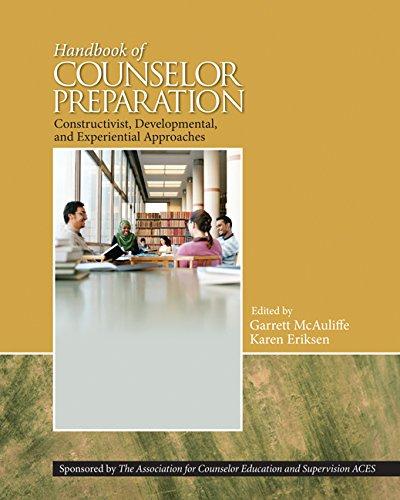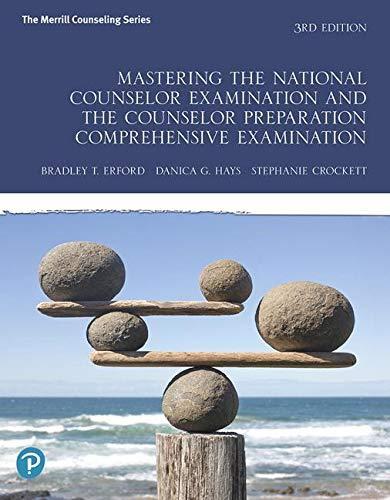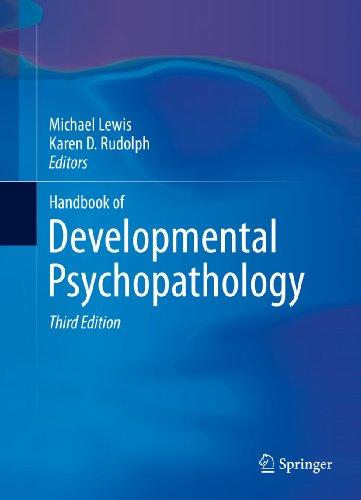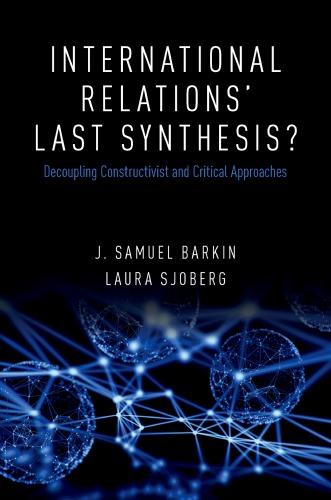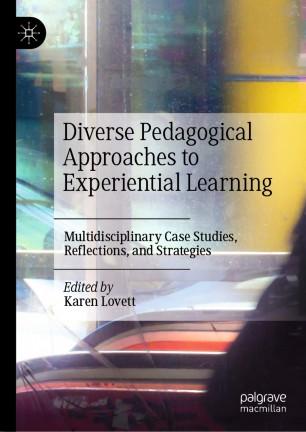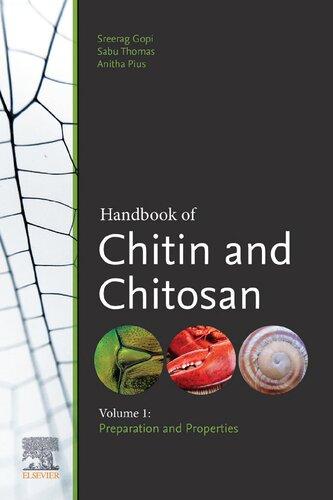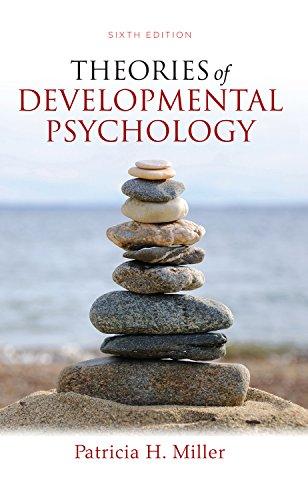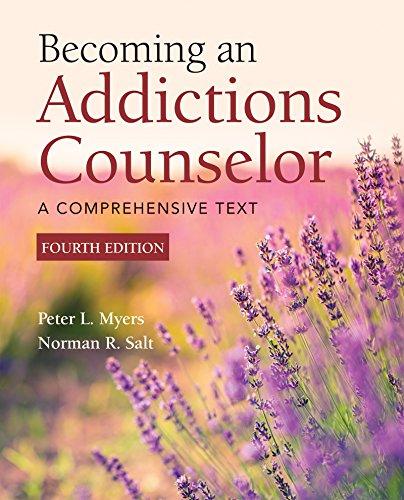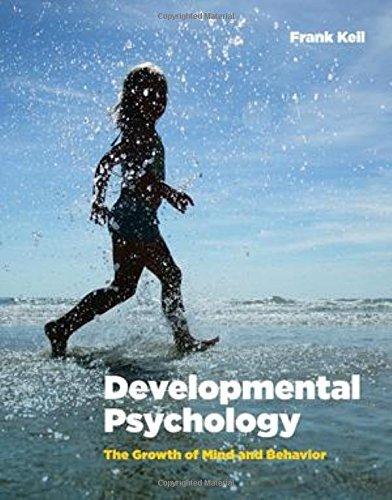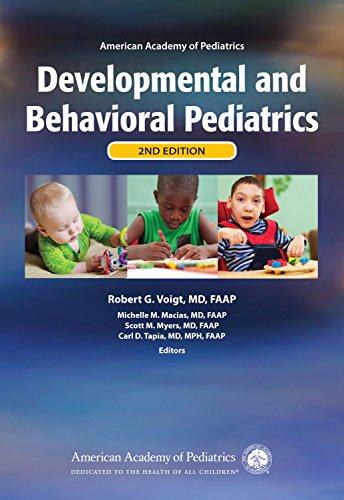Handbook
of Counselor Preparation: Constructivist, Developmental, and Experiential Approaches 1st Edition, (Ebook PDF)
Visit to download the full and correct content document: https://ebookmass.com/product/handbook-of-counselor-preparation-constructivist-dev elopmental-and-experiential-approaches-1st-edition-ebook-pdf/
More products digital (pdf, epub, mobi) instant download maybe you interests ...
Mastering the National Counselor Examination and Preparation
https://ebookmass.com/product/mastering-the-national-counselorexamination-and-preparation/
Handbook of Developmental Psychopathology 3rd Edition, (Ebook PDF)
https://ebookmass.com/product/handbook-of-developmentalpsychopathology-3rd-edition-ebook-pdf/
International relations’ last synthesis? : Decoupling constructivist and critical approaches Barkin
https://ebookmass.com/product/international-relations-lastsynthesis-decoupling-constructivist-and-critical-approachesbarkin/
Diverse Pedagogical Approaches to Experiential Learning: Multidisciplinary Case Studies, Reflections, and Strategies 1st ed. Edition Karen Lovett
https://ebookmass.com/product/diverse-pedagogical-approaches-toexperiential-learning-multidisciplinary-case-studies-reflectionsand-strategies-1st-ed-edition-karen-lovett/
Handbook of Chitin and Chitosan: Volume 1: Preparation and Properties 1st Edition Sabu Thomas (Editor)
https://ebookmass.com/product/handbook-of-chitin-and-chitosanvolume-1-preparation-and-properties-1st-edition-sabu-thomaseditor/
Theories of Developmental Psychology 6th Edition, (Ebook PDF)
https://ebookmass.com/product/theories-of-developmentalpsychology-6th-edition-ebook-pdf/
Becoming an Addictions Counselor 4th Edition – Ebook
PDF Version
https://ebookmass.com/product/becoming-an-addictionscounselor-4th-edition-ebook-pdf-version/
Developmental Psychology: The Growth of Mind and Behavior (Ebook PDF)
https://ebookmass.com/product/developmental-psychology-thegrowth-of-mind-and-behavior-ebook-pdf/
AAP Developmental and Behavioral Pediatrics (Ebook PDF)
https://ebookmass.com/product/aap-developmental-and-behavioralpediatrics-ebook-pdf/
DebraC.Cobia,JamieS.Carney,andDavidM.Shannon
24 TheUseofTechnologyinCounselorEducationandSupervision
LisaL Buono,GailE Uellendahl,LorraineJ Guth,andClaireJ Dandeneau
25 Narrative/PostmodernPerspectivesonCounselorEducation
KathieCrocketandElmarieKotzé
PARTIV
CONCLUSIONSANDIMPLICATIONS
26 ImplementingConstructivistCounselorEducation:PushingtheZoneofProximal Development
GarrettJ McAuliffeandKarenP Eriksen
AuthorIndex
SubjectIndex
AbouttheEditors
AbouttheContributors
Preface
GarrettJ.McAuliffe
Trueteachersdefendtheirpupilsagainsttheteacher’sowninfluence.Suchteachersinspire self-trust. They guide their pupils’ eyes from the teacher himself or herself to their own spiritthatquickensthem Thetrueteacherwillhavenodisciple
AdaptedfromBronsonAlcott(1840)
Through dialogue, the teacher-of-the-students and the students-of-the-teacher cease to existandanewtermemerges:teacher-studentwithstudents-teachers
PaoloFreire(1994,p.80)
This is a book for those who would prepare counselors for their work It is aimed at both graduate students who are training to be counselor educators and those who are already preparers of counselors. This book was inspired by three earlier volumes thatweedited.Now,withnewwritingandup-to-dateresearch,wepresentatextthatbrings togethermostofwhatcanbedonetoeducatefuturecounselorsinpowerfulways
The authors of this book believe that this work is sorely needed, as students mostly know us through our teaching. That is where future counselors are made. What can be more important? However, despite their position in “higher” education, of all educators, college instructors are the least prepared to teach Preparers of counselors are no exception Yet their light preparation in how to educate stands in ironic contrast with their weighty responsibility toprotectfutureclientsbyproducingethicalandintelligentcounselors.
The litany of professors’ lack of formal teaching training is well known: They study no methods;theyarenever,orrarely,observed;andtheirknowledgeofeducationalpsychologyis minimal or nonexistent And yet, each year thousands of professors in the counseling field enter classrooms to propound, pronounce, plead, cajole, demonstrate, evoke, stimulate, and generally act in ways that supposedly produce intellectually and emotionally sophisticated counselorsandtherapists
Despite this short shrift given to teacher training, many counselor educators nevertheless
struggle mightily to teach in energetic and innovative ways, hoping for felicitous results. Some go so far as to stretch inherited pedagogical boundaries, challenging the cult of expertise that has made professors into high knowledge priests and students into lay supplicantsinsomuchofcollegeteaching Thesepedagogicalboundary-stretchersattemptto create egalitarian atmospheres, participatory activities, opportunities for reflection, and experiential exercises in order to trigger development in future counselors. It is those efforts thatwewishtoextendinthisvolume.
We should note at this point that much has already been crafted well in counselor education. The curriculum is under constant revision, with more comprehensive and relevant content being added. In some courses, a high art for training has been developed. For example, instruction in basic helping skills has been sequential, layered, and experiential. Similarly,trainingingroupcounselingis,atitsbest,intenselyexperientialandself-reflective
Despite these successes, the expert talking head seems still to be alive and well, as a walk down a college corridor will testify. For whatever reasons, the expert who delivers “finished” knowledge to the audience of students continues to dominate college teaching. Whether behind or in front of the lectern, or sitting on the desk, professors make pronouncements such as “Here is an especially effective counseling approach,” or “Listen to my insightful diagnosis,”or“Here’showtorunacommunityagency.”Perhapsitiseasierforteacherstotell thantoevoke.Lecturingandpronouncingfeelssafertotheinstructorthandoescaseanalysis, demonstration, or discussion. At its worst, this banking deposit model of teaching, to use Freire’s (1994) metaphor for instructor-centered teaching, communicates to students that knowledge is the domain of the few, who pass it on to the many. And such teaching replicates itself by communicating to future counselors that clients also can change through passivereception.
This teacher-as-expert and student-as-receiver model has been increasingly challenged as ineffective, particularly in this field, which aims to produce self-authorizing professionals. Some educators, such as bell hooks (1994) and Henry Giroux (2006), have opened up the conversation about who learns from whom and how power and privilege are used, toward what ends, in the classroom They invite teachers to “not know,” to deconstruct cherished notions of how knowledge is created, and to encourage tolerance for ambiguity and selfdisclosureintheclassroom.Suchnotionsareenoughtomakemostcollegeteacherstremble.
I believe that, among the academic disciplines, counselor education is well poised for this type of conversation Counselor training has always been touched by an experiential, participatory teaching brush Counselor educators have traditionally incorporated both head
and heart into the learning environment. Equality, genuineness, and respect have been watchwords for the profession. Awareness of people as socially constructed cultural beings is slowlyinfusingourcurricula Thisbookattemptstobuildonthesepracticesandtotransform otherssothatanimpactful,progressivementalhealtheducationcanbeimplemented
Thus we join the national conversation about the purposes and methods of higher education. In so doing, we hope, perhaps with hubris, to trigger a broad self-examination by current and future counselor educators a dialogue on the nature of knowing, the political implicationsofteaching,andthecontentofmentalhealthtraining
In addition to being a response to the swirling discussions about higher education, this book is also a product of its authors’ personal struggles to teach well. All of the contributors have experienced the palpable tension of entering a classroom filled with expectant and diverse adults In that setting our consciences prick us we all know well the time, money, and, yes, the spirit that most students pour into their educations We ask ourselves, “Are we up to the task of meeting our students’ hopes and expectations, aspirations that are so well voicedatorientationsandinbeginningclasses?”
A final incentive for producing this book is the very pragmatic concern that the authors share about accountability for teaching, which is being increasingly demanded of college faculty. Student evaluations and peer reviews of instruction are becoming more important for themaintenanceandprogressofeducators’careers;thecitizenryviewstheirprimaryjobtobe teaching. Teaching is the major arena in which educators meet the public, no matter how much writing, research, and professional presentations are part of the broad educational charge.
We ask you, the readerof this volume, to embrace the challenge of reflexively examining, or deconstructing, your common assumptions and methods in all areas of counselor education Ask yourself, “What are the intended and unintended educational outcomes of students’ experiences in the classroom, the library, the lab, and the advising office?” In that learner-centered,orconstructivistvein,weeschewthenotionthatteacherscanever“provide” knowledgetoanotheror“instill”understanding.CertainlytheworksofPiaget(1971),Dewey (1963),Freire(1994),andmanyotherso-calledprogressiveeducatorsofferaseverechallenge tothecommonbankingdepositmodelofteaching Instead,teachingcanbeconsideredtobe the setting up of conditions for the learner to know, through a cycling and recycling of experience,reflection,andabstractconceptualization.
Our biases are these: We favor the constructivist and developmental educational theories These theories ask us to pay attention to the learner’s experience and to let the learner make
senseforherselfbystrugglingwithambiguitiesthatarejustbeyondthelevelshecantolerate. We also favor the notion of the social construction of knowledge, as we might practice it through classroom discourse We think that a fine metaphor for teaching is Robert Kegan’s (1998) notion of over-the-shoulder inquiry, in which students puzzle together over problems that emerge during the many discourses of their education, discourses that are often instigated by the educator. We also favor an inclusive, dialogical program practice, from admissionsthroughportfolioevaluation,inwhichweasfacultyarelearners-among-learners.
We offer this socially constructed project with humility, recognizing the boundedness of our vision by the historical, political, and cultural contexts of our times. It is up to the reader to try out these ideas, to expand them, and possibly to reject them in favor of more effective, complexones.
Whom,specifically,isthisbookfor?Weexpectittobeusefultoallthosewhodo,orwill, prepare counselors We hope that it might be a text in counselor education courses and a companionforpracticingcounseloreducators.
This book is freshly written. Authors have been recruited, vetted, and edited to produce deepandaccessiblework Thebookisdividedintothreesegments,asfollows
Part I opens the discussion of constructivist and developmental teaching with principles and research, presenting the constructivist and developmental foundations of this work in Chapter 1, the pedagogies of three of the classic thinkers in the field in Chapter 2, explicit guidelines for teaching practice in Chapter 3, an overview of the phases of counselor developmentinChapter4,andaprimeronsixcommonteachingstrategiesinChapter5
PartIImeetstheteacher’sneedforthepracticalwithcarefullycraftedguidesforteaching 17contentareas,orcourses,inthecounseloreducationcurriculum.
Part III consists of innovative ideas for counselor education in general, from evaluating theoutcomesofcounseloreducationinChapter23,toaguidetotheexpansionoftechnology in the field in Chapter 24, to the bold proposal for narrative-based counselor education in Chapter25.
This effort to trigger an examination of how we know and how we teach in the helping professionsofferssomeideasthataresurprisingand“border-crossing,”touseHenryGiroux’s (2006)phrase fora postmoderneducation But these ideas alsobuild onmuch that counselor educators already do well. We all stand on the shoulders of the giants who have taught us. But this book takes us a step beyond. It asks educators to empower and involve. It asks them to risk “losing control” over subject matter, to hear student voices, to pose dilemmas, to challenge their own assumptions in the presence of their students In that regard, many
counselor educators are already among the minority of educators who attempt to be “midwife”teachers,touseBelenky,Clinchy,Goldberger,andTarule’s(1986)vividmetaphor; that is, teachers who assist students in giving birth to their own ideas We believe that this midwife role is one that the practicing counselor can also apply to himself, that of coaching clientstobringforthmoreadaptivestoriesintheirlivesandrelationships.
No preface that purports to promote a constructivist frame for teaching should paradoxically end on so certain a note. Doubt and humility are central themes in constructivist thinking Thus, these words are offered in the spirit of dialogue We hope the conversation continues through your writing to us and your joining (or starting) the next teachingdiscussionatyourlocalornationalconference.Wehopethatthisisbutoneforayin an evolving, ongoing engagement of the construction of the counselor in a postmodern environment Let this volume be a warning, nevertheless, that we, as educators and as therapists, must live within the ambiguity of emergent understanding, of partial truths that must be rolled around on the tongues of dialogue. And let us be consistently reflective in our practicesandonourmostcherishednotions.
Wehopethatmorethanafewideasfromthisbookwillencouragerisktakingandtrigger experimentsinteaching Good Thatiswhatwesetouttodo Letusnowbegin
REFERENCES
Belenky,M.F.,Clinchy,B.M.,Goldberger,N.R.,&Tarule,J.M.(1986).Women’swaysof knowing NewYork:BasicBooks
Dewey, J. (1963). Experience and education. New York: Collier. (Original work published 1938)
Freire,P.(1994).Pedagogyoftheoppressed.NewYork:Continuum. Giroux,H.A.(2006).Americaontheedge:HenryGirouxonpolitics,culture,andeducation New York:PalgraveMacmillan.
hooks,b (1994) Teachingtotransgress NewYork:Routledge
Kegan,R.(1998).Inoverourheads Cambridge,MA:Harvard. Piaget,J.(1971).Psychologyandepistemology.Harmondsworth,England:Penguin.
Acknowledgments
TheauthorsandSAGEthankthefollowingreviewersfortheirhelpfulcommentson earlierdraftsofthismanuscript.
DonBubenzer,KentStateUniversity
CatherineY.Chang,GeorgiaStateUniversity
StephenE Craig,WesternMichiganUniversityGerardLawson,VirginiaTech
LarryC Loesch,UniversityofFlorida
SylviaC.Nassar-McMillan,NorthCarolinaStateUniversity
TerrellAweAgahePortman,TheUniversityofIowa
JohnE.Queener,TheUniversityofAkron
PARTI
Foundations:Constructivism, Development,Culture,andTeaching
Chapter1 ConstructingCounselorEducation
Chapter2 DeepLearning:TheWorkofDewey,Kohlberg,andKolb
Chapter3 GuidelinesforConstructivist-DevelopmentalCounselorEducation
Chapter4 WhoAretheLearners?PhasesofCounselorDevelopment
Chapter5
APrimeronSixKeyTeachingStrategies:Lecturing,Discussion, Questioning,SmallGroups,ReadingandWriting,andImprovisation
ConstructingCounselorEducation
GarrettJ.McAuliffe
You probably teach very well without recognizing that, often, the more teaching, the less learning.Ourjobinadulteducationisnottocoverasetofcoursematerials,buttoengage adultsineffectiveandsignificantlearning.
JaneVella,AdultEducator
With that declaration, Jane Vella (1994) challenges teachers to instigate something called significantlearning This certainly sounds like a desirable goal for all counselor educators But what is significant learning? Is it the achievement of a set of specific counseling competencies? For sure. Is it a set of positive attitudestowardtheworkofhelping?Yes,inthesensethatattitudeprecedesmuchbehavior. But, most of all, significant learning lies in the ability to perform what Schön (1991) defines as professional work the use of judgment and considered action in ambiguous situations Professional work is characterized by unclear problems with multiple dimensions. Such work is commonly fraught with ethical and value implications. The counselor often makes decisions in such situations in the moment. Counseling requires the ability to make commitments knowing that there are other choices that might be equally valid From these conditions, it might be clear that the act of counseling does not lend itself to rote practice (Harris,1993).
If counselors are to be prepared for the complexity of the work in the form of multiple societal values, ethnicities, moral centers, gender expectations, and the like then the designers of counselor education must prepare students (and themselves) to have a corresponding complexity. That complexity might take two forms: (1) a way of knowing that is reflexive and includes a tolerance for ambiguity and (2) the ability to be culturally relativistic
In the first case, counselors must embrace uncertainty as an expected condition of the work. The counselor must consistently entertain the possibility “I might be wrong. ” Counselors must remind themselves, when they are tempted to make a glib assessment, or automatically adhere to a favored technique, “I must catch myself trying to be too complete,” to use developmental theorist Robert Kegan’s (1998) phrase. Counselors must be reflexive andtolerantofambiguity.
Thesecondrequirementisculturalrelativism.Inordertoworkwithallclients,counselors must be able to de-center from their cultural assumptions Those emerge from their gender, social class, ethnicity, sexual orientation, and religion. Walt Whitman framed this challenge in Leaves of Grass: “Re-examine all you have been told at school or church, or in any books, and dismiss whatever insults your soul.” Whitman’s words ask individuals to self-authorize (Kegan, 1998) their values Similarly, philosopher Richard Rorty (1989) challenges individuals to be culturally de-centered, when they are taking a position, to think they might have “been initiated into the wrong tribe” (p. 75) on that value or issue. In this fluid, constructed social world, teachers and learners must regularly question their certainties, examiningthelimitsoftheirknowing
In sum, it is the position of this chapter, indeed of this entire book, that such a flexible, reflexivemindset,orwayofknowing,isrequiredfortheworkofprofessionalcounseling.The counselor’sownmentalcomplexitymustmatchtherequirementsoftheprofessionalwork.Of course, specific knowledge and skill competencies are also required for becoming a good group leader, career counselor, crisis intervener, and child advocate, to name a few professional counseling roles. But those skills must be applied provisionally, with situation, culture, and individual in mind. Given the fluidity of any knowledge base (just think about the single-minded adherence to psychoanalysis in the first half of the 20th century and the humanistic contagion of the second half), no professional can rely on a permanent set of understandings and expect to continue to do ethical and competent counseling. She or he must have the capacity of mind to fully engage and critically evaluate a fluid knowledge base, meetmultipleprofessionalroles,andrecognizeperspectivesfromdiversecultures.
CONSTRUCTIVISM:ANOVERVIEW
Constructivismistheguidingmetaphorforthisbook TheLatinoriginoftheworditself(con = with; struere = to build) refers to the communal act of making something, of putting together. From the constructivist perspective (also called constructionist, which will be
explained later), humans do not “find” or “discover” knowledge, nor do they receive it from infallible authorities. Knowledge is continually created through conversations. These conversations occur through the sciences, the arts, religion, the media (e.g., blogs, talk shows),professionaljournals,andclassroomdiscussion,tonamesomeexamples.
Constructivism is not a method. It is instead a way of understanding human meaningmaking. It invites the individual into a world in which subjectivity is ultimate (but, lest we descendintototalrelativism,notallpositionsareequallyhelpfulordefensible,asdetermined by a community’s standards) Constructivism’s central premise is that individuals actively create the world as they experience it. Individuals do not learn by copying some outside reality. Nor do they find knowledge as if it were a gem waiting to be uncovered in a mine (Gergen, 2009). They are actively involved in a joint enterprise with others in creating (constructing) new and preferably more helpful meanings Some constructivist thinkers (whichIwillherecalldevelopmentalconstructivists)alsoemphasizethepre-understandings,or cognitive capacities, that individuals bring to experience. These two versions of constructivismarediscussednext.
SocialConstructionism
Humans are always in a social surround, whether that consists of their internalized conceptionsofthegoodandthebeautiful(thesocial-in-the-individual)ortheongoingpublic conversations in media, religion, literature, and culture in general (the individual-in-the social), to name some examples. Social constructionism (note that the tion in the word is a mere convention from its usage by Berger and Luckmann [1966] in their classic The Social Construction of Reality) emphasizes the inevitably social, or communal, context of human meaning-making. All meaning is saturated in culture, history, place, and time. Humans are ineluctably shaped by the social forces of language and interaction. There is no “ pure ” thoughtthatisnotsociallymediated
Obvious examples of the social construction of meaning lie in the words humans use to describetheirexperienceoftheworld,suchassinful,gay,moral,mannerly,andbeautiful. Each of those words is heavily saturated with meanings that are created in human communities (e.g.,ethniccultures).Otherobviousexamplesofsociallyconstructedmeaningsarethenorms that guide humans’ thinking and behaving, such as cultural rules for interpersonal relations (e.g., greetings, politeness, honesty) and those for gender behavior (e.g., nurturing, aggressiveness). Less subtle are the implicit assumptions that guide thinking about what is
good,true,andbeautiful(e.g.,aworkethic,salvation,conceptionsofbeauty).
Socialconstructionistsproposethatthereisnopureknowledge,thatis,therearenoideas that are outside of time and place, or chronology and geography, in Gergen’s (2009) words
The very language that humans use is, of course, socially constructed For example, the English word love cannot be directly translated into many languages. In Japanese, there is suki, which generally means like (e.g., food, movies), koi for passionate love, and ai for parentallove.ThesetermsarenotdirectlytranslatableintotheEnglishwordlove.
In addition, it is not just the specific meaning of words, but the way in which they are used, that affects the construction of meaning in cultures. In Japanese culture, koi and ai are not often spoken directly to another it is not common to say, “I love you ” to a person.
Humans are always more or less embedded in their language. Individual meaning-making is sociallyconstructed
Two terms, discourse and deconstruction, are associated with social construction They will bediscussednext.
Discourse
Thetermdiscourserepresentsanyparticularsocializedmeaningsystemthatinformsaperson’s constructions. Therefore one can refer to, for example, a gender (e.g., male) discourse, a religious (e.g., Christian) discourse, a class (e.g., middle-class) discourse, an ethnic (e.g., Anglo American) discourse, a scientific (e.g., positivist) discourse, and a theoretical (e.g., humanistic)discourse
Any thread of ideas might be called a discourse. In fact, the very concept of social construction is itself a discourse. The discourse of social construction is guided by the notion that humans are always constructing knowledge. Such a view contrasts with the spectator discourseaboutknowledge Referringtothespectatorview,Ahujaandcolleagues(2008)say, “In such a view, the thinker pushes ideas and concepts around in his mental space like pieces of furniture frozen concepts without a life of their own making the assumption that the concepts completely render the world they are meant to model” (Part One, para. 10). This notion is nonconstructivist in that it treats knowledge as found, rather than constructed by a community By contrast, social constructionist thinking assumes the changeable, fluid nature ofknowledge,thatisalwayscontingentonplaceandtime,ordiscourse.
Deconstruction
Anydiscoursecanbeanalyzedforitsfoundations.Deconstructionistheactofexaminingthe origins and implications of an idea, that is, seeking its roots in a particular discourse, such as in the zeitgeist of an era or in a thinker’s biography (Gergen, 2009) Deconstruction challengestheideathattherearenoncontextual,unquestionableveritiesorgivensthatcanbe known.Allideascanbesubjectedtodeconstruction.Thereisnoroomfor“that’sjusttheway itis.”
ImplicationsofSocialConstructionforEducation
It follows, from the social constructionist perspective, that there are no realities that can be purely known beyond culture. The filters of such social identities as gender, age, race, religion, ethnicity, ability, class, and sexual orientation are pervasive lenses through which individuals create meanings Teachers and counselors should be aware of the social constructions that inform their own assumptions, lest they treat their current understanding as “real”andthereforeunassailable.
There are at least three dimensions of social constructionist thinking that have implicationsforcounseloreducation BurbulesandRice(1991)laythemoutthus:
1 A rejection of absolutes Any declaration of objectively knowable universals results in the restriction of human possibilities.So-calledmetanarratives,suchasgrandcounselingtheories,areviewedasexpressionsofparticularpoints of view Therefore, meaning-makers must be humble and reflexive, exquisitely attuned to the limits of their conclusions. They are asked to be consistently aware of their standpoints, whether they be based in culture, situation, temperament, or other characteristics of the time, place, and person This standpoint awareness has implications for teaching: Since knowledge is something that is developed in community rather than an objectively determined verity, the teacher must be persistently self-reflective, be open to the limits of her or his current positions and methods, and be willing to seek feedback about teaching content and process from fellow learners, including students Social constructionisteducatorsareawareofthecontextthataffectsanyperspectivesthattheymaytakeonphenomena
2 Thesaturationofallsocialdiscoursewithpowerordominance Power pervades all human encounters, including the power of hierarchy, physical size, sexual appeal, money, and persuasion In the classroom, teachers can unthinkingly perpetuate broader patterns of dominance, especially in their use of authority Teachers can subtly reinforce or challenge existing power relationships through how or whether they encourage students’ voices in the classroom, through how they use titles and names, through their openness to being questioned on their own teaching practices, and by being respectful or dismissive in responding to students With this awareness of power, teachers can give assignments, grade tests, and lead discussions in ways in which the fundamental equality and value of all persons are respected Counselor educators are thereby challenged to lift the veil of power to make sure that they are not perpetuating inequities. Methods for sharing power will be discussed throughout this book. They include teachers encouragingstudentfeedbackoncoursecontentandprocess,sharingtheirreasonsforassignments,andrevealingtheir owndoubts.
3
Thecelebrationofdifference Social constructionism assumes that the constitutive quality of existence is plurality In contrast, the objectivist or essentialist stance proclaims that a diversity of ideas is a temporary state on the way to perfectknowing Fromthesocialconstructionistframework,anysingular,unifieddiscourseistobetreatedskeptically, since it is likely that such discourse comes from the framework of the dominant group. For counselor educators, this assumption is a call to attend to the perspectives and experiences of so-called marginalized groups Participation, it follows,isacorrelateofsocialconstructionism.Socialconstructionisteducatorsthereforeactivelyextendinvitationsto voices that might otherwise be excluded, in admissions, assignments, and topics for discussion, to name some examples
Finally, there are at least two implications of the social constructionist impulse: humility and egalitarianism In the first case, the knower should not take his positions too permanently, or seriously, since they are built on the shifting foundations of culture, era, and selected evidence (Gergen, 2009). Social constructionist counselors are therefore attuned to the discourses from which they speak, whether they be gender, ethnic, social class, or historical contexts, among others Such counselors recognize the fluidity of all sense-making and the ongoing evolution of ideas. They will consistently ask, “What is another possibility?” and“FromwhatdiscourseamIspeaking?”Thatisaformofhumilityabouttruthclaims.
In addition, social constructionism carries with it an inherent egalitarian impulse Since knowledge is socially constructed, it is the province of all There are no unassailable authorities. All are engaged in particular discourses, some of which are often valued more than others. Of course, this notion does not rule out expertise; it allows for deconstruction of suchexpertiseandhelpsindividualsavoidofferingunthinkingallegiancetoexperts.
The social constructionist curriculum thus sets a demanding agenda for the traditional teacher in all counselor educators. Social constructionism challenges that part of the educator that either believes in the sanctity of her own authority or believes that she has perfected the best methods for knowing and subsequently for counseling. It asks educators instead to embracePaoloFreire’s(1994)conceptoflearnerasteacherandteacheraslearner
CONSTRUCTIVEDEVELOPMENT
A second version of constructivism that is emphasized in this book is developmental. From this perspective, overall approaches to knowing can evolve from more rigid, authoritarian ways of knowing to more flexible, open, and reflective ones. Constructivist-developmental theory therefore has a hopeful premise The constructivist-developmental formulation allows counselor educators to assess students’ ways of knowing and to aim their teaching at increasinglearners’relativismandself-authorshipofideas.
The origins of constructivist-developmental theory lie in the work of Jean Piaget (e.g., 1954). Piaget demonstrated that his children’s minds were not empty, but that they instead actively processed the material with which they were presented in more and more complex waysastheydeveloped Kegan(1998)referstothisincreasingcomplexityasexpandedmental capacity.
Constructive development is related to how people come to know something, that is, what process they use to decide what is important. How can be distinguished from what a person thinks or believes Thus, two students might hold similar political positions, but have arrivedatthemindifferentways.Anotherwordforthestudyofhowpeoplecometoknowis epistemology.
Manyreaderswillbe familiarwiththeconceptofstages in the Piagetian and Kohlbergian traditions Theideaofstagesiscentraltoconstructivist-developmentaltheory However,itis acontestednotioninthatitimpliesarigidwayofknowingacrosssituations
A number ofother termsare used todescribe anoverall epistemologicaltendency. In this chapter, the terms used interchangeably are order of consciousness (Kegan, 1998), way of knowing (Belenky, Clinchy, Goldberger, & Tarule, 1986), and the aforementioned epistemology Each of these terms refers to an individual’s overall approach to, or central tendency for, meaning-making. As mentioned earlier, an individual’s way of knowing can range from a relatively closed, rigid, and simple way of processing to a more open, flexible, andcomplexone.Anotherwayofdescribingsuchdevelopmentismovementfromarelatively externalrelianceonauthoritytowardamoreinternalsearchforunderstandings
For the purposes of this chapter, simplification of constructive development is required. Readers are referred to Belenky et al. (1986), Kegan (1998), Kohlberg (1981), and Perry (1998)formoreexpandeddescriptionsofconstructivedevelopment.
Criticsofconstructivist-developmentaltheoryofferatleasttwochallenges,eachofwhich needstobequalifiedhere.Oneisthatthetheoryishierarchical,inthatlaterwaysofknowing are valued more highly, and that therefore it is elitist, or “rankist.” While developmental theory could conceivably be used that way, theorists have emphasized the achievement, or triumph over a more limited way of knowing, that each order of consciousness represents Eachisvaluable
The critique of rankism should be taken seriously, as individuals should not use developmental theory as a way of degrading other people. In fact, later stages of knowing are characterized by greater tolerance and openness Developmental theorists discourage permanent labeling of individuals, instead recognizing the triumph and value that each stage
represents. Again, developmental thinking is a hopeful enterprise. It encourages educators to stretchstudents’epistemologiestowardopennessandflexibility.
The second qualification about constructivist-developmental theory is that the stages of knowingarenot“hard,”thatis,notabsoluteallofthetime,ineverysituation Whilethereis evidence that individuals do tend to use a dominant way of knowing (Kegan, 1998), which might metaphorically be called their center of constructive gravity, they do not rely on only one way of knowing at all times. More relativistic, or self-authorizing, thinkers may rely on external authority and simple answers in situations in which they are naïve Conversely, generallyauthority-reliantthinkersmay“thinkforthemselves”attimes.Therefore,insteadof using only one way of thinking at all times, it might instead be said that a person tends to operate out of certain frameworks. And those frameworks consist of shades, rather than rigid boundaries Therefore, individuals tend to construct knowledge in a certain way, with elementsofotherwaysofknowingalwayspossible Andtherearenotonlythreeorfourhard stages for knowing. In fact, Kegan’s constructive development theory uses 26 gradations of meaning-making tendencies that can be assessed in individuals (Lahey, Souvaine, Kegan, Goodman,&Felix,1988)
ThreeEpistemologiesofInterestforCounselorEducation
Three overall ways of knowing are of particular import for counselor education, as they represent the range of epistemologies that students of counseling utilize. These stages are called by various names in different theories. I will use the following terms, which are taken from a number of the parallel adult development theories: received/conventionalknowing,selfauthorizedknowing,anddialecticalknowing
Received/Conventional Knowing (Third Order of Consciousness). The first position here will be variously called received (Belenky et al, 1986) or conventional (Kohlberg, 1981) The person operating from this way of knowing tends to be reliant on external norms or authorities for what to think and how to behave. Those authorities might be, for example, parents,teachers,religioustexts,orclergy.
As noted before, it is important to remember that use of this epistemology is not total across situations (Moore, 1987) For example, a person who generally uses received knowing might show some self-authorization of ideas at times, if asked, “How did you come to know thiswasgoodorright?”Inthecaseofcounseloreducation,astudentmightexperiencedoubt aboutthecorrectnessofhisreceived/conventionalviewofhomosexualitybecauseofhisfamily
or religion’s strong negative feelings about gays. Nevertheless, he might also wonder, “How can I both have compassion, as my religion teaches me, and still condemn the physical expression of love in a same-sex relationship? Plus, I have heard that sexual orientation has a major biological component.” That thought reflects a glimmer of self-authorization. It might beshort-lived,withaquickretreattotheconventionalviewsoftheperson’sculture Itmight, however, also blossom if his dilemma is nurtured by an environment that challenges him to think for himself. If those challenges, which Kegan calls (1998) the culture of contradiction, help the person think in a more complex way, they can lead to a revolution (or evolution) in hiswholewayofknowingtowardself-authorization
In general, students who operate largely out of received/conventional knowing assume that their culture is fixed and true, that the rules that they have inherited from family and church and community must be adhered to rigidly and completely In the counseling workplace, they would ultimately rely on authorities, such as school principals or supervisors, ratherthancommittingtoareasoningprocessabouthowtoact.
Individuals who largely use received/conventional knowing cannot easily step outside of their inherited systems (eg, culture, social norms) to question rules They see the received systems as the way things are and must be Those systems might be gender roles, social manners, received hierarchies of all kinds, or racial views. Thus, counselors who operate largely from received/conventional knowing are unlikely to challenge a system that is unresponsive to nondominant groups, such as gay students or migrant workers, if it differs from the system under which they were raised The received system (eg, culture, social norms) reigns for them. This author and his colleague (McAuliffe & Lovell, 2006) found students who largely used received knowing to be characterized by externality, surface thinking, concreteness, and solution-drivenness. Those qualities are problematic for professionalwork
Most students of counseling operate from an order of consciousness that is either received/conventional knowing (Stage 3, also called the third order) or a mixture of Stage 3 and self-authorized knowing (Stage 4, or fourth order) (Eriksen & McAuliffe, 2003, 2006). The transitional way of knowing (3–4) has been called subjective knowing (Belenky et al, 1986) in that the individual relies on implicit subjective rationales for deciding on what is good or right, without reference to larger reasoning, scientific evidence, or other self-chosen procedures for deciding. Readers should note, nevertheless, that students of counseling commonlyoperatefromthatmixtureofreceivedandself-authorizedepistemologies
Self-AuthorizedKnowing(FourthOrderofConsciousness).Ifapersonexperiencesreceived knowing as an unworkable means of deciding on what is right or good, she may open up to the fourth order of consciousness, or self-authorized knowing (Kegan, 1998) Somewhat corresponding terms for this way of knowing include procedural knowing (Belenky et al, 1986),relativism(Perry,1998),andpostconventionalthinking (Kohlberg, 1981). At this stage, theindividualcanconsistentlyuseherownjudgmentandself-chosenproceduresassourcesof decision making. No pat answers based on tradition or authorities are acceptable. The selfauthorizing knower no longer takes social conventions, such as family norms or peer models, as the ultimate guides for deciding, but rather weighs evidence about what is important in a situation. Perry calls this way of thinking relativism, as the individual now recognizes that knowledge varies according to the context, whether that is culture or the unique circumstancesofarelationship
Individualswhoareself-authorizingapproachcomplexsituationsrealizingthattheymust use a self-defined procedure for deciding on what to believe or how to act. It follows that, using self-authorized knowing, individuals are not ultimately reliant on an external authority for how and what to think Instead, people who are guided by this epistemology decide on whatisrightorgoodbylookingeachtimeatcomplexsourcesofevidence Forexample,selfauthorizing allows them to generate a relatively autonomous view on sexual orientation or genderroles,ratherthanrelyingonreceivedreligiousorfamilyrules.
The benefits of self-authorized thinking for counselors are at least twofold. First, and overall, self-authorized thinking enables counselors to make more nuanced counseling decisions in the midst of what is inherently ambiguous and complex work. More specifically, self-authorizing thinkers are likely to have the following characteristics: empathy, selfreflectiveness,insight,andtoleranceforambiguity(McAuliffe&Lovell,2006).Theyarealso morelikelytochallengeanoppressivestatusquoandengageinactivismforoppressedgroups (McAuliffe,Grothaus,Jensen,&Michel,2010).
It should be noted again that there is no pure self-authorizing order of consciousness, or stage.Instead,eachindividualhasageneraltendency,orcenterofgravity(Laske,2009),that will predispose him to certain ways of knowing For example, all individuals will rely on authority occasionally, in specific situations Beginning counselors might take a suggestion fromasupervisorabouthowtoworkwithaclient.Supervisorswillalsodictateproceduresfor handling emergencies, for keeping records, and for evaluating progress. However, if selfauthorized knowing is well consolidated, students will know that supervisors have also constructed their views Students will take in the information for the moment, recognizing
the supervisor’s (or the text’s) relative expertise. External authority can be important, but not ultimate,fortheself-authorizingthinker.
As mentioned previously, students of counseling generally use aspects of both received (Stage3)andself-authorized(Stage4)knowing Thus,itisnotuncommonforstudentstobe caught between hearing the authority of the teacher or supervisor and deciding for themselves. Students might experience ambivalence about authority as they waver between Stages 3 and 4. For example, the practicum student might express some adolescent-like rebellion about a supervisor’s guidance, due to the circumstance of teetering between using her own hunches and needing the input of a more expert practitioner. In Chapter 4, counselor ambivalence toward authority at certain career phases is described more fully. Overall, more self-authorizing knowers have greater ability to find their source of judgment amid the cacophony of supervisor, textbook, instructor, and peer voices on what to do as a counselor
There are limits to self-authorized thinking. Individuals can become too enamored of their own procedures for deciding what is good or important. They can fall into the trap of certainty-by-method,thatis,ultimateadherencetotheirownlogic Forexample,acounselor can hold too firmly to his self-defined version of multi-culturalism, humanism, feminism, quantitative (or qualitative) research methods, diagnosis, and other hard-won points of view. Therefore, self-authorized thinkers face a new challenge: to question their self-defined certainties, to consider alternate formulations, to find greater understandings in seeming contradictions(Hanna&Ottens,1995) Thatisthetaskofthenextstage
DialecticalKnowing(FifthOrderofConsciousness).
Thelastoftheadultstageswillherebe called the dialectical, or the fifth order of consciousness, following Basseches (1984) and Kegan (1998) Research indicates that people under 40 years of age do not consistently exhibit such a way of knowing. In general, fewer than 5 percent of adults have been found to usedialecticalthinkingasadominantmode(Kegan,1998).Thus,itisunlikelythatcounselor educators will encounter students (or faculty, for that matter) who demonstrate dialectical knowing But it is useful to discuss this way of knowing because it reminds educators to attempt to take multiple perspectives and question their certainties, and to help some studentswhoarereadytodoso.
Thetermdialecticalhasanumberofmeanings,but,statedmostsimply,itreferstotaking multiple perspectives and questioning assumptions In this way of knowing, the thinker is especially attuned to the fact that she is constructing knowledge in a social manner in which
ideasandvaluesarecreatedovertimeincommunities,throughshareddiscourse.
When individuals use dialectical thinking, they question the certainty of their own positions In particular, they consistently look for the discourses from which they speak, such as those of gender, social class, or any other framework They then consider alternate, even opposite views, seeing them as valuable contributions to emerging understanding of an issue. Kegan (1998) considers this order of consciousness to be, in fact, fully actualized social constructionist thinking, as described in a previous section of this chapter. With dialectical knowing,individualsseekcontradiction,input,anddialogue Theylookforthelimitsoftheir way of thinking. But the thinker need not be awash in a sea of relativism. In the process, the individualcanmaketentativecommitmentstopositions(e.g.diagnoses,counselingtheories), orwhatPerry(1998)callscommitmentsinrelativism.
Counselors who think dialectically can question the foundations of any system, going back and forth between two or more perspectives For example, the dialectical counselor would seek the limits of the humanistic principle of being “in the moment” with clients, perhaps by considering a diagnostic impression. In the process of doing so, the counselor wouldseethediagnosticschemeasasociallyconstructedsystem,comingfromaparticularset of psychiatric, theoretical, cultural, and research discourses, with their flaws and limitations Andthecounselorwouldknowthatalloftheseformulationsaretentativeandtemporary.He would seek the limitations in his thinking, thus embracing the playful expression that “contradictionismyfriend.”
Another iteration of consistent dialectical knowing is called constructivist knowing (Belenky et al., 1986). I will use the characteristics of constructivist knowing to explain this stage.Readersmightlistthesecharacteristicsandaspiretothem.
The first characteristic of constructivist knowing lies in a person recognizing that she is engagedintheconstructionofknowledge Such a perspective-sensitive stance is characterized by humilityaboutthefinalityofone’sbeliefs.Consistentwiththerecognitionofsubjectivityisa second, related quality, namely, accepting responsibility for continually evaluating one ’ s assumptions about knowledge. The constructivist counselor could live in the “permanent whitewater” of consistently checking on her position and being open to new information A related, and third, characteristic lies in being intensely self-conscious, that is, aware of one ’ s own thoughts, judgments, moods, and desires. Here the individual can stand outside of her momentaryperspectiveandexamineitsusefulness.
Beyond awareness of one ’ s standpoints is, of course, the ability to understand the perspectives of others In that vein, Belenky et al (1986) found that constructivist counselors
cantakepositionsoutsideofaparticularframeofreference, whether that frame be science, logic, culture, family, religion, a political perspective, or any other context. This extending of oneself beyond any one personal and cultural discourse is related to a fifth characteristic: a deepened ability to attend to others and to feel related to them in spite of what may be great differences.Thisconnectednesswouldallowthecounselortoattendtodifferencesincultures, personalities,andlifestyles,lettingtheuniversalandthedifferentsitsidebyside.
A sixth characteristic of constructed knowing consists of a behavior: The constructivist thinker usually engages in real talk, as opposed to what the philosopher Jurgen Habermas (1984)calledconcealedstrategic talk. Real talk means sharing ideas, listening carefully, and, in the process, encouraging emergent ideas to grow. The opposite of real talk would be having hidden agendas, masked metames-sages that involve manipulation. Such talk requires the seventhcharacteristicoftheconstructivistcounselor:theabilitytorecognizetheinevitabilityof conflict and learning to engage it in a useful way Internal conflict would be entertained as an opportunity to learn. External conflict would be similarly approached with a receptive posture.
The last two characteristics of constructivist knowing represent an activist impulse: Eighth, such knowers would consistently noticewhatisgoingonwithothersandcareaboutthe lives of people around them and, ninth, they would want their voices and actions to make a differenceintheworld. This author and his colleagues (McAuliffe et al., 2010) found such an activiststancetobeparticularlypresentinpostconventional(Kohlberg,1981)thinkers.
Despite the allure of dialectical thinking, it would not be a central goal of a constructivist counselor education, as students are not necessarily ready to question positions that they are stilltryingtoself-authorize.However,knowingthecharacteristicsofsuchthinkingcanpoint educators and future counselors in a direction that would make the counselors more humane, systems-challenging, and able to manage conflict Indeed, these are qualities that counselor educatorsthemselves,includingthereader,mightstrivefor.
As mentioned earlier, students of counseling generally think from a mix of received and self-authorized frameworks. Therefore, counselor education should focus on the movement toward a self-authorizing, relativistic order of consciousness Kegan (1998) argues that that is thementalcapacityrequiredforbeginningprofessionals
ImplicationsofConstructiveDevelopmentforEducation
Constructivist-developmental theory can serve as a guide for counselor educators to assess
student thinking and to stretch students toward self-authorized knowing. Teachers can triggerdilemmasthatcallintoquestionstudents’receivedviewsaboutwhatisgoodandright. As students encounter topics such as invisible privilege, religious diversity, minority sexual orientation, authenticity in human relations, and theoretical integration, they are called to puzzle their own assumptions and come up with a way of knowing what is most useful for solvingdilemmas.Thosedilemmascanbeintentionallypresentedbycounseloreducators.
As students encounter a diversity of ideas, educators can challenge them to generate their ownanswerstocomplexproblemsfromreal-lifesituations(eg,byaskingthemtorespondto cases, to engage in role-playing, to ponder ethical dilemmas). After such inductive learning opportunitiesareprovided,studentscanbeaskedtoreflectonthebasisfortheirsolutionsand listen to others’ ideas. Such a participatory environment contrasts with one in which an authority delivers truths By contrast, the developmental educator sets up problematic situations, invites students to ponder the issues and choices involved, and, when students propose possibilities, asks the students, “How did you come to know that?” and “What is anotherperspective?”and“Whatmightbevariousconsequencesofthisdecision?”
Authors in later chapters of this book will share teaching methods that instigate selfauthorized knowing They will suggest methods for challenging learners to generate their own ideas, to recognize the limits of external authorities, and to seek evidence for positions that they take. In that way, significant learning (Vella, 1994; see Chapter 3) might occur in theformofempoweringfuturecounselorstothinkforthemselves.
CONSTRUCTIVISTTEACHINGANDCOUNSELINGIN GENERAL:THEPARALLEL
It might be seen from the preceding discussion that constructivist-oriented teaching prepares students for the complex work of counseling itself Jean Peterson (personal communication, 2000), a counselor educator from Purdue University, lays out the implications of constructivistteachingforschoolcounselinginthisway:
Studentswhohavedifficultyembracing[constructivistteaching]alsooftenhavedifficulty going into a counseling session open to the experience of it, to the client’s way of seeing theworld,andtonewwaysofconceptualizingandstrategizing Bycontrast,studentswho begintoembrace[constructivistthinking]begintoleave“over-preparation”behind.
It is certainly not just for typical counselor-client “sessions” that a constructivist
approach models something important; it is also in helping our students to enter a school [or agency], be open to learning about the unique and idiosyncratic culture there, and have confidence that their “theory-building” will serve them well as they move into autonomous (and collaborative) professional behavior. Former school teachers who aspire to become school counselors often have difficulty with this “low-control” approach However, once they can integrate their great strengths, they can be great school counselors.Studentswithoutateachingbackground(themajorityofmycurrentstudents) are sometimes initially intimidated by the school culture. However, they, too, can be nudged into openness, acceptance of multiple perspectives (certainly including those of the teachers in their buildings), and tolerance for ambiguity (which all counselors must have,certainlynolesssothoseinschools).
Withthisexample,Petersonhasdescribedahoped-forresultofcounseloreducation:the creation of the relativistic, self-authorizing counselor who can help clients become empowered, who can reflectively select among many interventions without being captive to one theoretical discourse, who is alert to the cultural context of the work, and who can examineanysystemofthinkingorinstitutionforitsimplications
CONCLUSION
Counseloreducationcansharethegoalsofliberalartseducation,thatis,tofreestudentsfrom the narrow prejudices of their cultural and historical context. It is therefore a goal of counselor education to create skeptics, practitioners who accept no truth on hearsay, thinkers whocanquestiontheirownfoundationsforknowing.Liberallyeducatedcounselorsarethose who are inclined to listen and hear, to pause and reflect on new phenomena, to look for evidence and counterevidence for their views, to practice humility and self-criticism, to nurture and empower the people around them, and to make and see connections among peopleandideasthatseemdistantintimeandspace
Thisintroductorychapterisarequestforcounseloreducatorstopayattentiontostudents’ current ways of knowing, to help them be reflective and consider the limits of their knowing, all the while passionately committing themselves to the enhancement of human welfare and equityinhumanaffairs
REFERENCES
Ahuja, S., Ebersole, J., Laske, O., Neiwert, P., Perez, M., & Stewart, R. (2008). Business leadership for an evolving planet: The need for transformational thinking in interculturalandinternationalenvironments IntegralLeadershipReview,8 RetrievedJuly12, 2010, from http://wwwintegralleadershipreviewcom/archives-2008/2008-10/2008-10article-ahuja.php
Basseches,M (1984) Dialecticalthinkingandadultdevelopment Norwood,NJ:Ablex
Belenky,M.F.,Clinchy,B.M.,Goldberger,N.R.,&Tarule,J.M.(1986).Women’swaysof knowing NewYork:BasicBooks
Berger, P. L., & Luckmann, T. (1966). The social construction of reality: A treatise in the sociologyofknowledge GardenCity,NY:Doubleday.
Burbules,N.C.,&Rice,S.(1991).Dialogueacrossdifferences.HarvardEducationalReview, 61,393–416.
Eriksen, K. P., & McAuliffe, G. J. (2003). A measure of counselor competency. Counselor EducationandSupervision,43(2),120–133.
Eriksen, K P, & McAuliffe, G J (2006) Constructive development and counselor competence.CounselorEducationandSupervision,45,180–192.
Freire, P, & Freire, A M (1994) Pedagogy of hope: Reliving pedagogy of the oppressed New York:Continuum.
Gergen,K (2009) Aninvitationtosocialconstruction ThousandOaks,CA:Sage Habermas, J. (1984). The theory of communicative action. Volume 1: Reason and the rationalizationofsociety London:Heinemann
Hanna, F. J., & Ottens, A. J. (1995). The role of wisdom in psychotherapy. Journal of PsychotherapyIntegration,5,195–219.
Harris, I. B. (1993). New expectations for professional competence. In L. Curry, J. F. Wergin, & Associates (Eds.), Educating professionals: Responding to new expectations for competenceandaccountability(pp 17–52) SanFrancisco:Jossey-Bass
Kegan, R. (1998). In over our heads: The mental demands of modern life. Cambridge, MA: HarvardUniversityPress.
Kohlberg, L. (1981). The philosophy of moral development: Moral stages and the idea of justice. SanFrancisco:Harper&Row.
Lahey, L., Souvaine, E., Kegan, R., Goodman, R., & Felix, S. (1988). A guide to the subjectobject interview: Its administration and interpretation. Cambridge, MA: Harvard GraduateSchoolofEducation,Subject-ObjectResearchGroup.
Laske, O. E. (2009). Measuring hidden dimensions of human systems: Foundations of requisite organization.Medford,MA:InterdevelopmentalInstitutePress.
McAuliffe, G. J., Grothaus, T., Jensen, M., & Michel, R. (2010, March). Ethnocentrism challenged: A study of intentional cultural de-centering. Paper presented at the Annual SymposiumoftheSocietyforResearchinAdultDevelopment,Philadelphia.
McAuliffe, G. J., & Lovell, C. W. (2006). The influence of counselor epistemology on the helping interview: A qualitative study. Journal of Counseling and Development, 8, 308–317
Moore, W. S. (1987). Learningenvironmentpreferences. Olympia, WA: Center for the Study ofIntellectualDevelopment.
Perry, W. G., Jr. (1998). Forms of intellectual and ethical development in the college years: A scheme.SanFrancisco:Jossey-Bass.(Originalworkpublished1970) Piaget,J.(1954).Theconstructionofrealityinthechild.NewYork:BasicBooks.
Rorty,R (1989) Contingency,irony,andsolidarity NewYork:CambridgeUniversityPress
Schön, D. A. (1991). The reflective practitioner: How professionals think in action. Aldershot, UK:Avebury
Vella, J. (1994). Learning to listen, learning to teach: The power of dialogue in educating adults. SanFrancisco:Jossey-Bass.
CHAPTER
